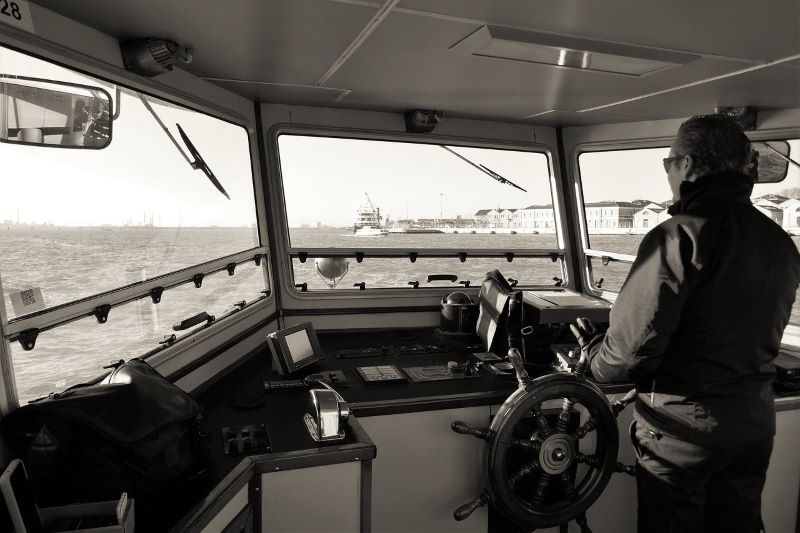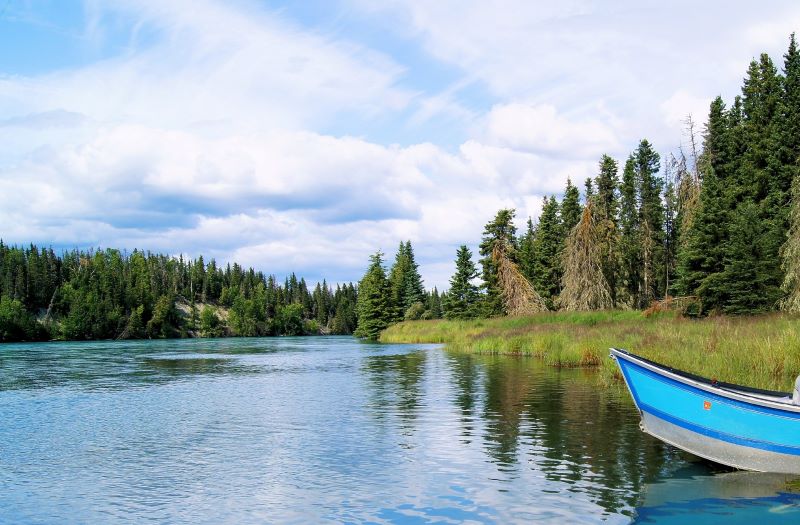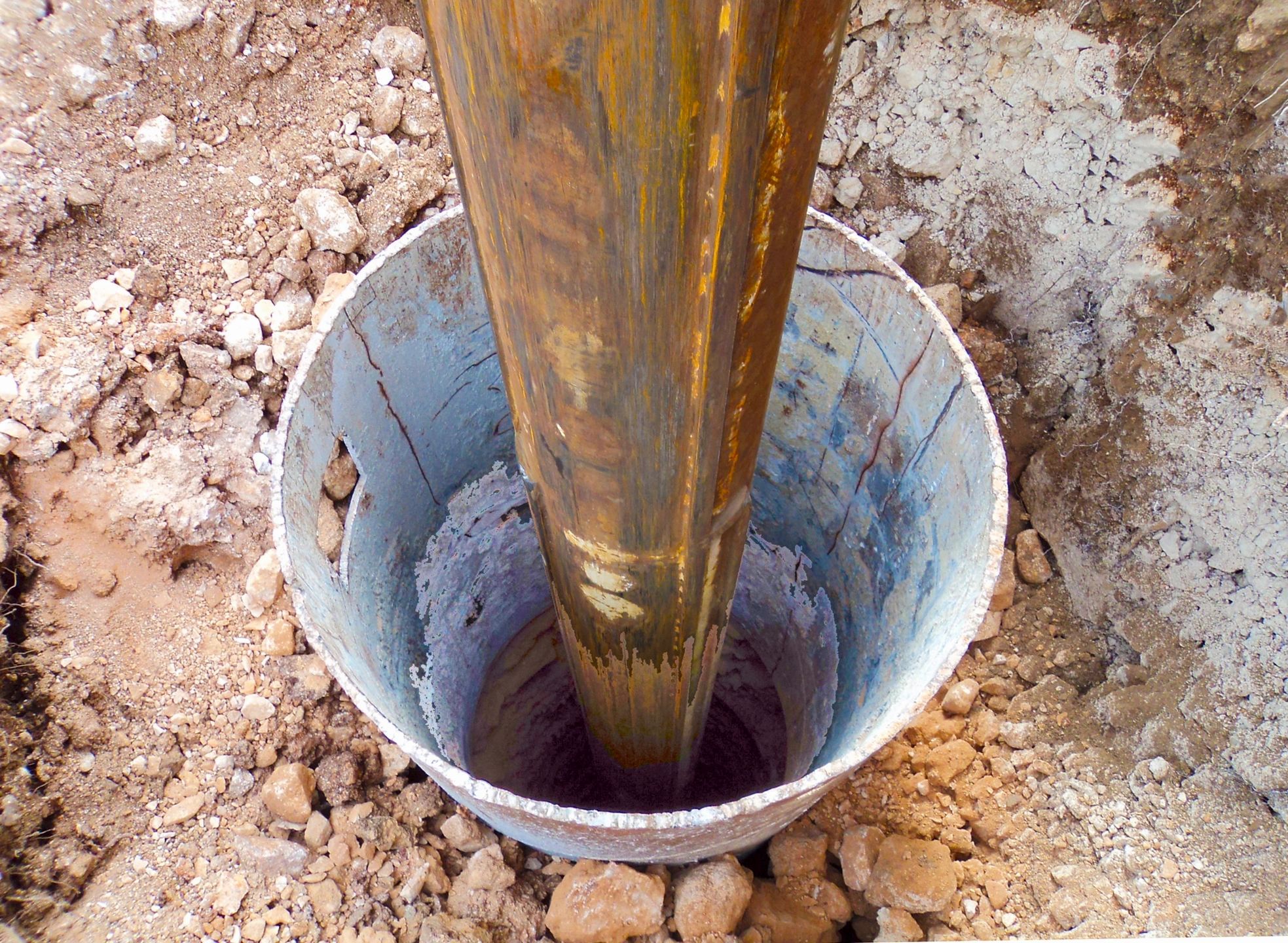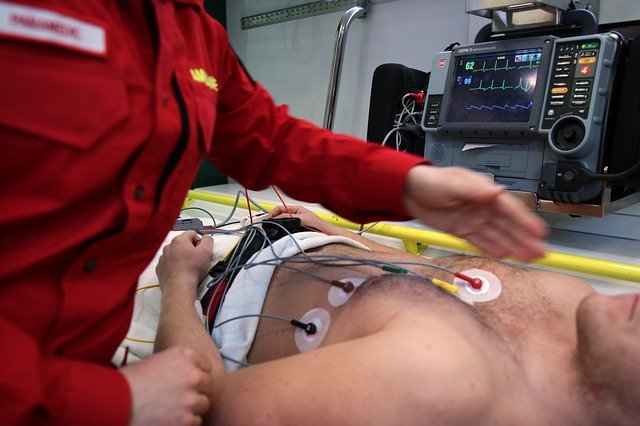Healthcare

Home Health Aides
Alaska has one of the most stringent training requirements for Home Health Aides which includes:
- Minimum 140 hours of training
- Minimum 80 hours of clinical training
- Minimum 12 hours of in-service training in each calendar year provided by the home health agency
In Alaska, home health aide services can only be provided by:
- Nurse aide certified by the Board of Nursing
- Who has not been reported in the registry of certified nurses for abuse, neglect etc
- Has a valid criminal history check
Median Annual Wage $24,000 – $35,000
Education Requirements, Wages, Subjobs, Schooling
Getting Degrees on the Kenai Peninsula
Kenai Peninsula Apprenticeships and Training programs
Affiliations

Dental
Top hot jobs under this field:
Dental Assistant
- Have a high school diploma or GED.
- Complete a training program, which includes class work, lab work and a clinical externship.
- May become certified by taking a national certification exam. Hot Job in Dental Careers: Dental Assistant Dental assisting programs typically offer either a certificate or an associate’s degree. A certificate usually takes one year of full-time study after high school, while an associate’s degree takes two to three years.
Dentist: Median Annual Wage $140,000 – $250,000
Dental Assistant: Median Annual Wage $35,000 – $53,000
Getting Degrees on the Kenai Peninsula
Kenai Peninsula Apprenticeships and Training programs

Behavioral Health
High school diploma or GED.
- Complete a two-year associate’s degree (to be a paraprofessional) or a four-year bachelor’s degree (to be a professional).
- You may also continue your education and advance your career by pursuing a graduate degree.
Top Hot Jobs under this field
Case Manager/Care Coordinator
- May take an exam to become certified in case management
Social Worker
- Obtain a license
- Pass an exam
Case Manager/Care Coordinator: Median Annual Wage $38,363
Social Worker: Median Annual Wage $52,000 – $82,000
Getting Degrees on the Kenai Peninsula
Kenai Peninsula Apprenticeships and Training programs
Job Connections

Medical Provider
Top Hot jobs under this field
Community Health Aide
- Have math and English skills at or beyond the sixth grade level.
- Complete a series of basic training sessions and a clinical preceptorship.
- Provide proof of current emergency trauma technician or emergency medical technician training/certification.
- Complete a period of supervised clinical training.
- Usually be a local resident who intends to remain in the village.
- Be employed by a tribal health organization that operates a CHA program. The basic CHA training series, which consists of 15 weeks divided into four sessions, typically takes about 14 months to complete. CHAs are paid a salary during their training, which is offered at four regional centers across the state. CHAs may complete additional clinical requirements and take an exam to become a CHP. CHAs and CHPs may also work toward an associate of applied science degree.
Physician Assistant
- Complete at least two years of undergraduate coursework in the sciences; some PA programs require a bachelor’s degree prior to admission. • Graduate from an accredited PA program.
- Pass the Physician Assistant National Certification Exam.
- Obtain a PA license from the Alaska State Medical Board. Earning a bachelor’s degree typically takes four to five years, and PA programs take an additional two years to complete. Near the end of your training, you’ll participate in supervised work experience. It’s important to note most PA programs require applicants to have previous health care experience. Some PAs begin their careers as community health aides
Family Physician
- Earn a bachelor’s degree. Be sure to get high grades and take courses required for admission to medical school.
- Graduate from medical school and complete an internship.
- Pass a state licensing exam.
- Complete a residency program in family and general medicine.
- May pass additional exams to become board-certified. All together, it takes approximately 11 years of education after high school to become a family physician. Earning a bachelor’s degree takes approximately four years, medical school takes another four years, and residency programs usually last three years. Through WWAMI, Alaska’s medical school, you can complete three of your four years of medical school right here in Alaska
All need a high School Diploma or GED
Community Health Aide: Median Annual Wage $29,386
Physician Assistant: Median Annual Wage $100,000 – $150,000
Family Physician: Median Annual Wage $180,000 – $300,000
Kenai Peninsula Apprenticeships and Training programs

Nursing
Top hot jobs under this field
Certified Nurse Assistant
- Complete a training program.
- Complete a certification exam, depending on where you want to work. (Certification is required to work in long-term care and home health settings, and many hospitals and clinics also prefer to hire CNAs who hold certifications.) CNA training programs, which include a minimum of 60 hours of classroom instruction and 80 hours of supervised clinical practice
Registered Nurse
- Complete an approved nursing program, which includes supervised clinical work experience, typically in hospitals or other medical settings. –Pass the National Council Licensure Examination (NCLEX). Most nurses either earn an associate’s degree, which takes two to three years, or a bachelor’s degree, which takes four to five years. RNs can also pursue graduate studies in specialty areas, such as community health, mental health, health care administration, surgical nursing, pediatrics and maternal health.
Critical Care Nurse
- Complete an approved nursing program to become a registered nurse (RN).
- Pass the National Council Licensure Examination (NCLEX).
- Obtain specialty instruction and practice in critical care. Most RN programs offer either an associate’s degree, which takes two to three years to complete, or a bachelor’s degree, which takes four to five years. To gain the additional knowledge and experience needed to become a CCN, RNs then complete a critical care training course or receive on-the-job training. While not required, CCNs may also become certified by passing an exam and meeting continuing education and clinical experience requirements.
High School diploma
Certified Nurse Assistant: Median Annual Wage $26,739
Registered Nurse: Median Annual Wage $50,000 – $86,000
Critical Care Nurse: Median Annual Wage $84,800
Getting Degrees on the Kenai Peninsula
Kenai Peninsula Apprenticeships and Training programs
Affiliations

Clinical Services
Top hot jobs under this field
Medical Assistant
- Have a high school diploma or GED.
- Graduate from a medical assisting program.
- May take a certification exam.
- Medical assisting programs typically offer either a certificate or an associate’s degree. Certificates usually take about one year of full time study after high school, and associate’s degrees typically take two years. After graduation, medical assistants can also become certified by taking a certification exam.
Pharmacy Technician
- Have a high school diploma or GED.
- Be at least 18 years of age.
- Complete on-the-job training or a formal training program.
- Be fluent in reading, writing and speaking English.
- Have an active Alaska State Pharmacy Technician License.
- May become nationally certified. Employers often prefer applicants who have completed formal training. Formal pharmacy technician programs offer either certificates or associate’s degrees. Certificates usually take one year of full-time study, and associate’s degrees typically take two years. While not required, pharmacy technicians may also earn national certification by taking an exam.
Pharmacist
- Have a high school diploma or GED.
- Be fluent in reading, writing and speaking English.
- Complete at least two years of accredited college work prior to entering pharmacy school.
- Graduate from a four-year pharmacy school with a doctor of pharmacy (PharmD) degree.
- May need to complete a residency after graduation.
- Complete a 1,500-hour internship under the direct supervision of a licensed pharmacist.
- Pass the North American Pharmacist Licensure Exam (NAPLEX) and Multistate Pharmacy Jurisprudence Exam (MPJE).
- Obtain an Alaska pharmacist license.
- Complete 30 hours of continuing education every two years. After high school, it takes approximately six years of education to become a pharmacist, including two years of college-level, pre-pharmacy courses and four years of pharmacy school. Some pharmacists choose to pursue advanced degrees, such as master’s degrees or doctorates. While there are currently no pharmacy programs in Alaska, planning has begun to bring and host programs in the state. A pre-pharmacy program is also under development. Learn more by reviewing the “training providers” section later in this publication.
Medical Assistant: Median Annual Wage $35,000 – $47,000
Pharmacy Technician: Median Annual Wage $32,000 – $49,000
Pharmacist: Median Annual Wage $140,000 – $170,000
Kenai Peninsula Apprenticeships and Training programs

Administrative Services
Top hot jobs under this field
Coding/Billing Specialist
- Have a high school diploma or GED.
- Complete coding/billing courses, receive on-the-job training or obtain a certificate.
- May earn national certification. While a formal training program is not required for this position, there are a number of courses and certificate programs that prepare students to work as coding/billing specialists. Most certificate programs take two years or less to complete. Coding/billing specialists may also become certified. Due to the constant changes in medical office technology, it is also important for coding/billing specialists to take classes to keep their skills up to-date.
Health information Technician
- Have a high school diploma or GED.
- Graduate from a health information technology program.
- May become certified. Most health information technology programs offer associate’s degrees, which take about two years to complete. Some health information technicians go on to earn bachelor’s degrees, which prepares them to work as managers or administrators. This degree takes about four years. After completing an accredited program, graduates are eligible to earn their Registered Health Information Technician (RHIT) credential by passing a national exam. Technicians with the RHIT credential are required to complete 20 hours of continuing education every two years.
Coding/Billing Specialist: Median Annual Wage $46,746
Health Information Technician: Median Annual Wage $47,020
Getting Degrees on the Kenai Peninsula
Kenai Peninsula Apprenticeships and Training programs

Public Health
Top hot jobs under this field
Health Educator
- Have a high school diploma or GED.
- Earn at least a bachelor’s degree, usually in community health education, health education, public health education, or school health education.
- Many health educators also go on to earn a master’s degree, and some complete a doctoral degree program. Getting a bachelor’s degree takes about four years of full-time study after high school. A master’s degree usually takes five to six years, and a doctoral degree typically takes about 10 years.
Health Educator: Median Annual Wage $56,000 – $91,000
Getting Degrees on the Kenai Peninsula

Diagnostic Services
Top hot jobs under this field
Medical Laboratory Technician
- Have a high school diploma or GED, preferably with a background in science and math.
- Complete a MLT program. Most MLT programs offer an associate’s degree, which usually takes two years to earn. Some MLTs go on to complete more advanced medical programs to become medical technologists or physician assistants.
Radiographic Technologist
- Have a high school diploma or GED.
- Complete a radiologic technology training program, preferably with an associate’s degree or greater.
- May earn national certification by taking an exam. Most radiographic technologists earn at least an associate’s degree, which takes about two years of study, while others go on to earn a four-year bachelor’s degree. Students may also pursue training in specialty areas, such as nuclear medicine technology, mammography, CT scanning, MRI and radiation therapy.
Medical Laboratory Technician: Median Annual Wage $49,000 – $72,000
Radiographic Technologist: Median Annual Wage $56,000 – $81,000
Getting Degrees on the Kenai Peninsula
Kenai Peninsula Apprenticeships and Training programs
Maritime

Fisheries
Studies fish and fisheries management with the goal of protecting or increasing the health of fish populations. There is a range of sub-specialization within this field, from counting fish in a river to counting dollars in an entire region. Jobs include fishery biologist, biometrician, economist and technician. If you love research, statistics and getting outdoors, fisheries is a great career choice.
Salary Range $40,000 to $100,000 year
Fishery Biologist, $83,460 Median Salary
- Bachelor’s degree in fisheries, biology, biological or natural sciences required courses, providers and length: More Information
Biostatisticians, $91,767 Median Salary
- MS to PhD
- courses, providers and length: More Information
Fishery Economist, $89,459 Median Salary
- Graduate degree required, BBA/BA Economics, 4-5 years
- MS Fisheries, +2-4 years
- courses, providers and length: More Information
Fishery Technician, $45,078 Median Salary
- High school diploma or GED required.
- Postsecondary education recommended. 1-2 years
- courses, providers and length: More Information
Getting a Degree on the Kenai Peninsula
Kenai Peninsula Apprenticeships and Training programs

Seafood Harvester
“Seafood harvester” is a technical way to say “commercial fisherman” or “shellfish farmer.” There are a lot of ways to get paid to go fishing, from working on a large ship with 100 crew members to working on a beach all by yourself. If you love the salty air and want to make your living from the sea, this is the career field for you. Aye, skipper.
Salary $20,000 to $100,000
Harvester $36,219 Median Salary
- High School Diploma or GED required
- Industry training and certification, business management certificate or degree, and/or entrepreneurship training recommended
- courses, providers and length: More Information
Shellfish Farmer $36,225 Median Salary
- High school diploma or GED required
- Courses, providers and length: More Information
Getting a Degree on the Kenai Peninsula
Kenai Peninsula Apprenticeships and Training programs

Seafood Processor
Top to bottom, you’re in charge of taking a very fragile product and moving it to dinner tables from New York City to Paris to Shanghai. How, you ask? Hard work and a commitment to excellence. In the end, it’s all about managing your people so that they work together as a great team.
Salary $57,000 to $156,000
Seafood Plant Manager, $97,222 Median Salary
- Bachelor’s degree required
- Master’s degree recommended
-courses, provider and length: More Information
Seafood Production Manager, $97,222 Median Salary
- Associate’s degree and industry training certification required
- Bachelor’s degree recommended
-courses, provider and length: More Information
Quality Assurance Manager and Technician, $97,222 Median Salary
- High school diplimas or GED required.
- Industry Training Certification required.
-courses, provider, and length: More Information
Seafood Processing Technical
Can Machinist, $59,483 Median Salary
- High school diploma or GED required
- Industry training certification required, 4 years
Seafood Processing Technical
Electrician
- High school Diploma or GED required
- Industry training certification required, 1-4 years
Kenai Peninsula Apprenticeships and Training programs

Shipbuilding & Vessel Repair/Maintenance, Marine Technologist
From building a ship or fishing boat to keeping ships and boats running, from welding to engineering. For folks just getting started in their careers after high school to experienced professionals with advanced degrees. If you love to design high-tech systems, work with your hands and see what you built or repaired take to the sea, this is the career field for you.
Salary $22,000 to $193,000
Electrical Engineering $105,694 median salary
- Bachelor’s Degree required
- Courses, provider and length More Information
Marine Engineering
$38,969 Median Salary
- High school diploma or GED required
- Industry certification recommended
- courses, provider and length, More Information
Marine Electrician and Laborer
$38,969 Median Salary
- High school diploma or GED required
- Industry certification recommended
Marine Electrician
$68,084 Median Salary
- High school diploma or GED required
- Training certification or Maritime Academy degree required
Mechanical Engineer
$102,075 Median Salary
- Bachelor’s Degree required
Welder
$63,497 Median Salary
- High school diploma or GED required
- industry training certification recommended
Getting a Degree on the Kenai Peninsula
Kenai Peninsula Apprenticeships and Training programs

Vessel Operations
From coiling rope to taking the helm, the people in vessel operations are the ones who run the ship. This is an exciting, high-paying career field with lots of travel. Start as an apprentice or deckhand, work your way up to Able Seaman, maybe even Mate or Captain, if you’re smart, reliable and dedicated to your craft. This is what being a sailor is all about.
Salary $60,000 to $350,000
Able Seaman
$40,073 Median Salary
- High school diploma or GED required
- Industry training certification required
QMED
$68,084 Median Salary
- High school diploma or GED required
- Industry training certification required
Mate
$68,648 Median Salary
- High school diploma or GED required
- Industry training certification or Maritime Academy degree
Captain
$68,648 Median Salary
- High School Diploma or GED
- Industry training certification or Maritime Academy degree
Charter Boat Captain
$68,648 Median Salary
- High school diploma or GED required
- Industry training certification required
Steward
$48,252 Median Salary
- High school diploma or GED required
- Industry training certification required
Getting a Degree on the Kenai Peninsula
Kenai Peninsula Apprenticeships and Training programs
Construction

Construction Manager
Low demand and high supply of candidates
High school diploma to a Bachelors Degree
Plan, direct, or coordinate, usually through subordinate supervisory personnel, activities concerned with the construction and maintenance of structures, facilities, and systems. Participate in the conceptual development of a construction project and oversee its organization, scheduling, budgeting, and implementation. Includes managers in specialized construction fields, such as carpentry or plumbing.
Median Annual Wage $110,700
Getting Degrees on the Kenai Peninsula
Kenai Peninsula Apprenticeships and Training programs

Laborer
Perform tasks involving physical labor at construction sites. May operate hand and power tools of all types: air hammers, earth tampers, cement mixers, small mechanical hoists, surveying and measuring equipment, and a variety of other equipment and instruments. May clean and prepare sites, dig trenches, set braces to support the sides of excavations, erect scaffolding, and clean up rubble, debris and other waste materials. May assist other craft workers.
Demand low,
High school diploma or GED
Some previous work-related skill, knowledge, or experience is usually needed. For example, a teller would benefit from experience working directly with the public.
Employees in these occupations need anywhere from a few months to one year of working with experienced employees. A recognized apprenticeship program may be associated with these occupations.
Median Annual Wage $48,690
Getting Degrees on the Kenai Peninsula
Kenai Peninsula Apprenticeships and Training programs

Building Inspectors
Make sure it’s done right. Inspectors perform electrical and plumbing assessments of new construction and repairs or alterations to existing structures. Electrical Inspectors provide inspections on new and altered electrical systems on all commercial structures and on dwellings. Plumbing Inspectors conduct inspections of all new and altered plumbing, gas and fuel piping installations. Inspectors are experienced journey-level tradesmen. For more information on the career pathways to become an inspector, refer to career pages for Electricians and Plumbers. This is for the expert who loves to see good work well executed.
Certificate to masters Degree
Median Salary $80,392
Getting Degrees on the Kenai Peninsula
Kenai Peninsula Apprenticeships and Training programs

Electrician
- Plan layout and installation of electrical wiring, equipment, or fixtures, based on job specifications and local codes.
- Connect wires to circuit breakers, transformers, or other components.
- Test electrical systems or continuity of circuits in electrical wiring, equipment, or fixtures, using testing devices, such as ohmmeters, voltmeters, or oscilloscopes, to ensure compatibility and safety of system.
- Inspect electrical systems, equipment, or components to identify hazards, defects, or the need for adjustment or repair, and to ensure compliance with codes.
- Use a variety of tools or equipment, such as power construction equipment, measuring devices, power tools, and testing equipment, such as oscilloscopes, ammeters, or test lamps.
60% gets certification, less than 10% continue to get bachelors degree
Median Salary $74,511
Getting Degrees on the Kenai Peninsula
Kenai Peninsula Apprenticeships and Training programs
Scholarships
Additional Services Available
Affiliations

Plumbing and Heating
Schooling option: More Information
Plumbing and Heating Technicians are in demand throughout Alaska, in both urban and in rural areas. Assemble, install, alter and repair pipelines or pipe systems that carry water, steam, air, or other liquids or gases. May install heating and cooling equipment and mechanical control systems. Includes sprinkler fitters. There are few things more important to a building or home than the plumbing. This is a job for true professionals who insist on quality work.
Median salary $61,299
- Start with an apprenticeship to receive on-the-job training which coincides with classroom instruction. These courses often consist of safety, state and city code regulations and blueprint reading.
- Gain a background knowledge of work-based mathematics as well as some physics and chemistry.
- Most states and localities require plumbers to have licenses, have at least two-years work experience and take and pass an exam. This will allow plumbers to work independently.
Getting Degrees on the Kenai Peninsula
Kenai Peninsula Apprenticeships and Training programs
Scholarships
Additional Services Available

Welding
Want to build stuff that will last a long time? Use hand-welding, flame-cutting, hand soldering, or brazing equipment to weld or join metal components or to fill holes, indentations, or seams of fabricated metal products. From big jobs like framework for buildings to small, detailed work.
Welding Certificate, 1 year
Average Salary per year $39,522
Many high schools and post-secondary training centers across the state offer welding classes. Check with your local high school, school district career and technical-education department, and local colleges and university campus.
Schooling option: More Information
Getting Degrees on the Kenai Peninsula
Kenai Peninsula Apprenticeships and Training programs

Carpentry
Part mathematician, part artist. Construct, install, or repair structures and fixtures made of wood. You’ll build big stuff that supports weight, like the frame of an entire building, forms for concrete, stairways, window frames, door frames, and floors. But also finer things that require great care and precision, like cabinets. Carpentry also includes brattice builders, who build doors or ventilation walls in underground passageways.
Getting Degrees on the Kenai Peninsula
Kenai Peninsula Apprenticeships and Training programs

Refrigeration
Refrigeration Technicians install, maintain, and repair Freon and Ammonia air conditioning and refrigeration systems and troubleshoot and repair electrical controls. Their knowledge and skills are in demand throughout Alaska in homes, office buildings, restaurants, public buildings, seafood processing, and manufacturing plants and shipping industries.
- 10-hour OSHA Construction Safety Certification
- EPA 608 Refrigeration Technician
- Industry Competency Exam (ICE)
- Industrial First Aid and CPR
Median salary $67,707
Getting Degrees on the Kenai Peninsula
Tourism

In 2020, 2.23 million visitors came to Alaska, Simpson said, with 30% of summer visitors going to the Kenai Peninsula.
Ten percent of Alaska visitors come from the international market, with China having the most growth potential, and German-speaking Europe maintaining a large market share.
Most visitors to the Kenai Peninsula are independent travelers, according to Simpson, but the cruise industry is growing tourism as more cruise ships make their way to different ports across the state, driving the growth of visitors to Alaska.
According to Simpson, cruise traffic across the Gulf of Alaska is up 15% and 2020 projects a 6% growth in cruise ship capacity with 606 voyages bringing 1.4 million visitors to the state.
Hospitality

Getting Degrees on the Kenai Peninsula
Opportunities
Guides

Getting Degrees on the Kenai Peninsula
Kenai Peninsula Apprenticeships and Training programs
Mining, Oil & Gas

Diesel mechanics
Diesel Mechanics inspect, repair, or overhaul buses and trucks, or maintain and repair any diesel engine type. Diesel Mechanics are also responsible for the maintenance and repair of diesel-powered vehicles. Their duties include administering diagnostic tests on automobiles, test driving vehicles to measure performance, and maintaining detailed accounts and records of the vehicles they have serviced.
Education and training needed: High school diploma or GED; technical college or trade school diploma
Diesel Mechanics: Median Annual Wage $73,854 – $131,697
Getting Degrees on the Kenai Peninsula
Kenai Peninsula Apprenticeships and Training programs

Process Technology
The graduates of the KPC Process Technology program have gone on to work for companies like, Marathon Petroleum, ConocoPhillips, Blue Crest Energy, Exxon Mobil, ASRC Energy Services, Alyeska Pipeline Service Company, and many more.
How do the folks at headquarters know if all the pumps are pumping, pipelines are flowing and other complex, inter-connected stuff at an oilfield is working properly? They ask you. Monitors the daily operation of wells and related equipment, such as pumping units, tanks, compressors and valves while maintaining a safe work environment. Requires an associate degree, available through University of Alaska. But this is one of the best ways to score a high-paying job in the oil and gas industry right out of school. Also, it’s usually an indoor position.
Process Technician / Process Operator – Alaska Safety Alliance
Average Salary $73,854 – $131,697
Getting Degrees on the Kenai Peninsula
Kenai Peninsula Apprenticeships and Training programs
Affiliations

Sheet Metal worker
When it’s time to put the protective “skin” on a structure or system, they need someone dedicated to details. That’s you. Sheetmetal workers repair, install, fabricate, design and assemble sheet metal products. Examples of products may include; HVAC systems, metal shelving, custom furniture or art, metal cabinets, flashing and vast variety of other items.
Also applies to aviation
Average Salary $61,030
Kenai Peninsula Apprenticeships and Training programs
Affiliations

Underground and surface mining
Federally required 30 CFR parts 46 and 48 Underground and Surface New Miner Training, and Underground and Surface Annual Refresher.
Underground and Surface Mining: Median Annual Wage $73,121
Getting Degrees on the Kenai Peninsula
Opportunities

Metallurgy, Chemical and Environmental Laboratory Technician
The graduates of the KPC Process Technology program have gone on to work for companies like, Marathon Petroleum, ConocoPhillips, Blue Crest Energy, Exxon Mobil, ASRC Energy Services, Alyeska Pipeline Service Company, and many more.
How do the folks at headquarters know if all the pumps are pumping, pipelines are flowing and other complex, inter-connected stuff at an oilfield is working properly? They ask you. Monitors the daily operation of wells and related equipment, such as pumping units, tanks, compressors and valves while maintaining a safe work environment. Requires an associate degree, available through University of Alaska. But this is one of the best ways to score a high-paying job in the oil and gas industry right out of school. Also, it’s usually an indoor position.
Process Technician / Process Operator – Alaska Safety Alliance
Average Salary $55,757
Getting Degrees on the Kenai Peninsula
Kenai Peninsula Apprenticeships and Training programs

Electrician
- Plan layout and installation of electrical wiring, equipment, or fixtures, based on job specifications and local codes.
- Connect wires to circuit breakers, transformers, or other components.
- Test electrical systems or continuity of circuits in electrical wiring, equipment, or fixtures, using testing devices, such as ohmmeters, voltmeters, or oscilloscopes, to ensure compatibility and safety of system.
- Inspect electrical systems, equipment, or components to identify hazards, defects, or the need for adjustment or repair, and to ensure compliance with codes.
- Use a variety of tools or equipment, such as power construction equipment, measuring devices, power tools, and testing equipment, such as oscilloscopes, ammeters, or test lamps.
60% gets certification, less than 10% continue to get bachelors degree
Median Salary $74,511
Getting Degrees on the Kenai Peninsula
Kenai Peninsula Apprenticeships and Training programs
Scholarships
Additional Services Available
Affiliations

Plumbing and Heating
Schooling option: More Information
Plumbing and Heating Technicians are in demand throughout Alaska, in both urban and in rural areas. Assemble, install, alter and repair pipelines or pipe systems that carry water, steam, air, or other liquids or gases. May install heating and cooling equipment and mechanical control systems. Includes sprinkler fitters. There are few things more important to a building or home than the plumbing. This is a job for true professionals who insist on quality work.
Median salary $61,299
- Start with an apprenticeship to receive on-the-job training which coincides with classroom instruction. These courses often consist of safety, state and city code regulations and blueprint reading.
- Gain a background knowledge of work-based mathematics as well as some physics and chemistry.
- Most states and localities require plumbers to have licenses, have at least two-years work experience and take and pass an exam. This will allow plumbers to work independently.
Getting Degrees on the Kenai Peninsula
Kenai Peninsula Apprenticeships and Training programs
Scholarships
Additional Services Available

Welding
Want to build stuff that will last a long time? Use hand-welding, flame-cutting, hand soldering, or brazing equipment to weld or join metal components or to fill holes, indentations, or seams of fabricated metal products. From big jobs like framework for buildings to small, detailed work.
Welding Certificate, 1 year
Average Salary per year $42,684 – $65,302
Many high schools and post-secondary training centers across the state offer welding classes. Check with your local high school, school district career and technical-education department, and local colleges and university campus.
Schooling option: More Information
Getting Degrees on the Kenai Peninsula
Kenai Peninsula Apprenticeships and Training programs

Carpentry
Part mathematician, part artist. Construct, install, or repair structures and fixtures made of wood. You’ll build big stuff that supports weight, like the frame of an entire building, forms for concrete, stairways, window frames, door frames, and floors. But also finer things that require great care and precision, like cabinets. Carpentry also includes brattice builders, who build doors or ventilation walls in underground passageways.
Carpentry: Median Annual Wage $47,000 – $82,000
Getting Degrees on the Kenai Peninsula
Kenai Peninsula Apprenticeships and Training programs
Agricultural, farming & forestry

AGRICULTURAL, FARMING & FORESTRY
The number of farms on the Kenai Peninsula is up 60% in 2020.
The borough has a land grant of 150,000 acres and we estimate that there are probably about 4,000 acres that the borough could allocate to agricultural ventures…We’re seeing more farms, more small farms, more high tunnels and more market connections. There’s more product variety and quality, more interest in food security, more local foods and food stories, and there is more farm tourism … The borough has land and is ready to engage some of its land in agriculture to facilitate this growth.
Farmworkers and Laborers, Crop, Nursery, and Greenhouse $15.54
Forest Technician
- Must have High School Diploma or GED equivalent.
-complete Training program
$36,555 average salary yearly
Wildlife Biologist
Possess a Bachelor’s Degree with a major in a biological science that includes the following course work: 1) at least 9 semester hours in such wildlife subjects as mammalogy, ornithology, animal ecology, wildlife management, or research courses in the field of wildlife biology; AND 2) at least 12 semester hours in zoology in such subjects as general zoology, invertebrate zoology, vertebrate zoology, comparative anatomy, physiology, genetics, ecology, cellular biology, parasitology, entomology, or research courses in such subjects; AND 3) at least 9 semester hours in botany or the related plant sciences.
$88,321 average salary yearly
Getting Degrees on the Kenai Peninsula
Job Connection
Education

Education
Getting Degrees on the Kenai Peninsula
Kenai Peninsula Apprenticeships and Training programs
Scholarships
Affiliations
Culinary

Culinary
You can study a foundation degree, higher national diploma, or degree in Professional Cookery and Culinary Arts. Another way into the job is to take a college course, like a Level 3 Diploma in Professional Cookery or Level 4 Diploma in Professional Culinary Arts.
$22,000 – $31,000 average yearly salary
Getting Degrees on the Kenai Peninsula
Kenai Peninsula Apprenticeships and Training programs
Job Connection
Wildlife & Biology

WILDLIFE & BIOLOGY
While it’s not surprising that wildlife is important economically, the scale is amazing. The non-monetary value is also profound – most Alaskans cite wildlife as a significantly important reason for living here.
Median Annual Wage $26,000 – $85,000
Getting Degrees on the Kenai Peninsula
Job Connection
Affiliations
Transportation, Commercial Driver

TRANSPORTATION, COMMERCIAL DRIVER
Haul-truck drivers operate haulage equipment to transport and dump ore and waste. This is big-scale driving that requires great focus on safety and precision at an often-crowded and/or confined worksite. Requires the ability to monitor truck operations, recognize, report and avoid hazards, and carry out assignments to achieve safety and production goals. You know those trucks the size of an office building? That’s you in the driver’s seat.
Education and training needed: High school diploma or GED; Haul Truck Driver Certification preferred
Average Salary $65,667
Getting Degrees on the Kenai Peninsula
Kenai Peninsula Apprenticeships and Training programs
Job Connections
Opportunities
Aviation

AVIATION
Aviation touches all aspects of life in rural Alaska, and is a basic mode of transportation due to the vastness of Alaska. Approximately 82% of Alaskan communities are not served by roads and have no connection to the contiguous road system. The Alaska Department of Commerce, Community & Economic Development has 393 communities in their database, and the Federal Aviation Administration has an additional 99 sites with Location ID’s in Alaska. Of these 492 Alaska locations, only 90 sites, or 18%, are on the contiguous paved road system. The remaining 402 sites, or 82%, are off the paved road system and depend on aviation for year-around access.
Alaska has six times as many pilots per capita and 16 times as many aircraft per capita when compared to the rest of the United States. Rural Aviation covers all Alaskan airports except the Ted Stevens Anchorage International Airport and Fairbanks International Airport.
The Alaska Department of Transportation & Public Facilities owns 235 airports in the rural aviation system that the Division of Statewide Aviation oversees policies, procedures, and programs to develop, construct, operate, and manage those facilities.
Must hold FAA Pilot License and Medical. 2,000 hours total flight time in a fixed wing aircraft, or 1,200 hours total flight time in a high-performance military aircraft. Half of rotor-wing flight time up to 1,000 hours may be counted toward total flight time.
Commercial pilots earn an average yearly salary of $75,506.
Wages typically start from $43,446 and go up to $131,224.
Getting Degrees on the Kenai Peninsula
Kenai Peninsula Apprenticeships and Training programs
Job Connection
Opportunities
First Responders

Paramedic
EMT certificate
1 year certificate program
1 year clinicals and ride a longs
Paramedic school is no joke and requires a lot of self-motivation and drive. Before entering school, you must get your EMT certificate (offered each semester) and apply for program admission. Selected students will spend a full year in classroom, skills labs, fire department ride-alongs, and hospital clinicals. The Capstone component of the program is completed at large Advanced Life Support Services in the Lower-48 where the candidate spends 2-3 months in a working internship with licensed paramedic educators performing all of the skills of a paramedic.
The entire course takes approximately a year to complete the paramedic certificate, or a little longer if you are going to complete your AAS Degree in Paramedic Technology.
Median Annual Wage $40,000 – $63,000
Kenai Peninsula Apprenticeships and Training programs

Corrections Officer
Occupational Endorsement Certificate
When you’re a corrections professional, you have an opportunity to work in a variety of roles in public safety and criminal justice. Whether as a correctional officer, probation/parole officer or a criminal justice technician, you contribute to the overall justice system.
Median Annual Wage $41,000 – $62,000
Kenai Peninsula Apprenticeships and Training programs

Firefighter
State of Alaska Firefighter I and Hazardous Materials Operations certifications.
Students must successfully complete the practical skills exam and score at least 70 percent on the written exam. KPC does not administer the certification exams.
Median Annual Wage $28,000 – $79,000
Kenai Peninsula Apprenticeships and Training programs
About KP Workforce
The Kenai Peninsula Workforce website was developed to help students and individuals further their career aspirations through connection and education conduits.
KPEDD Address
14896 Kenai Spur Hwy,
Suite 103-A
Kenai, AK 99611
Office: (907) 283-3335
KPEDD Website


